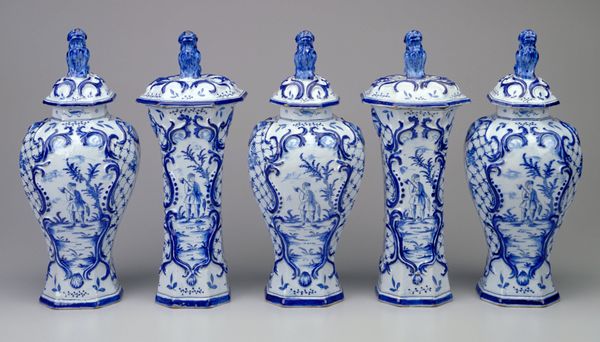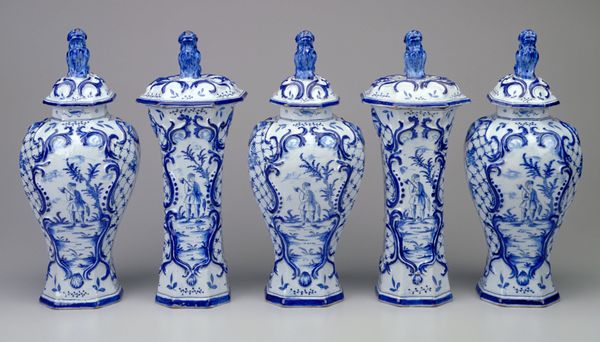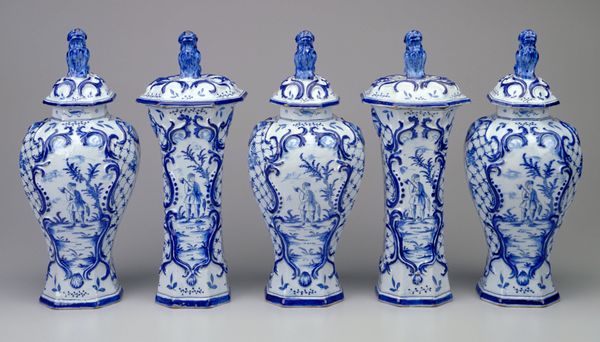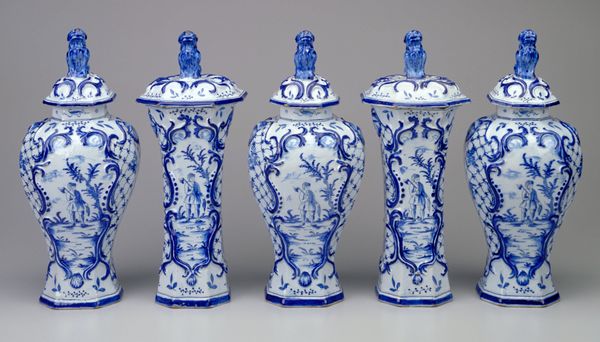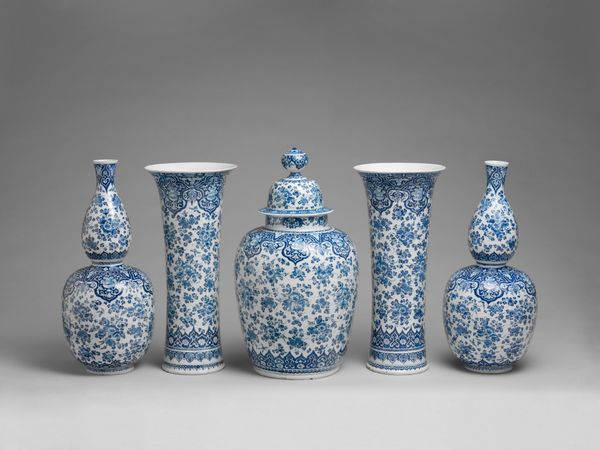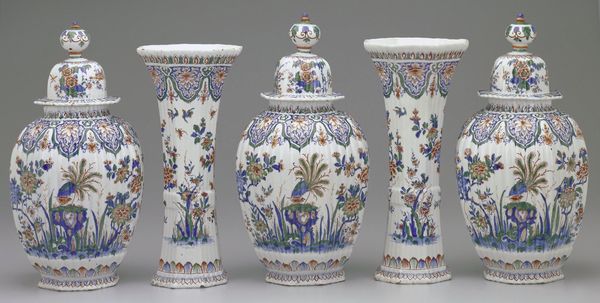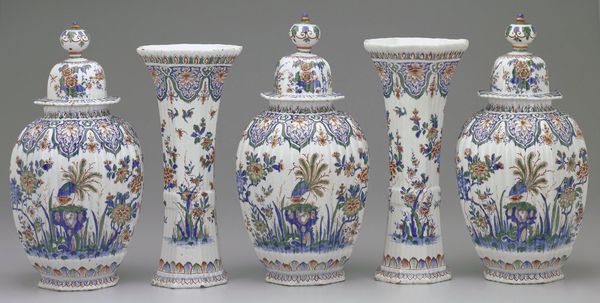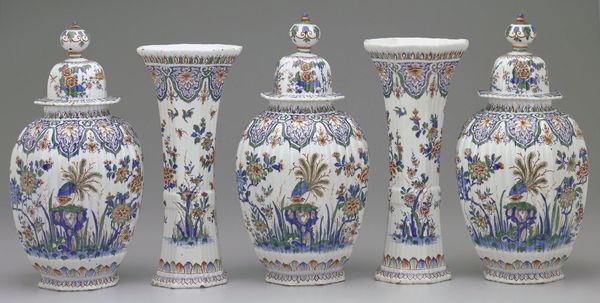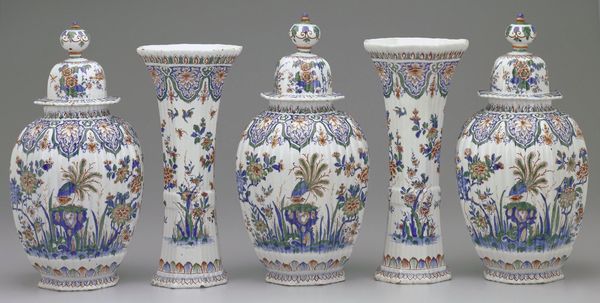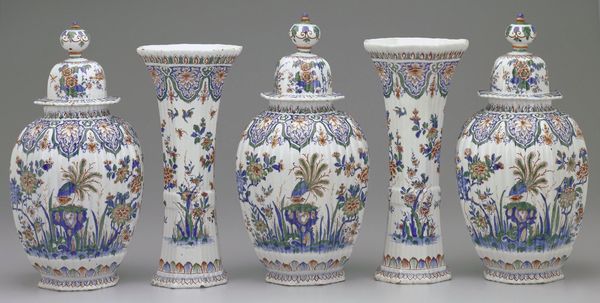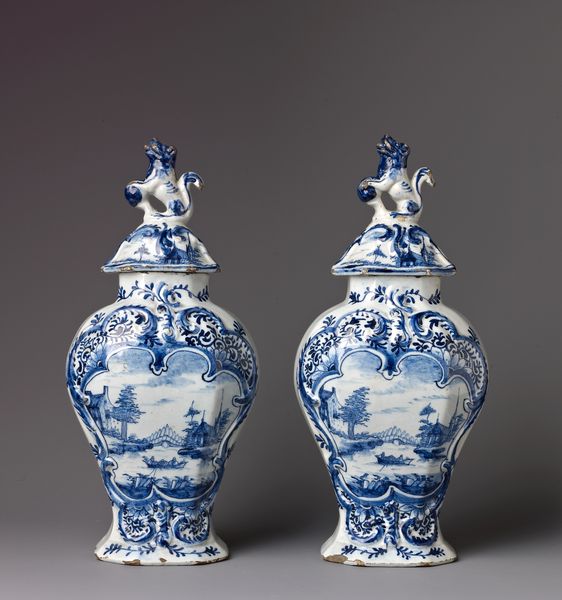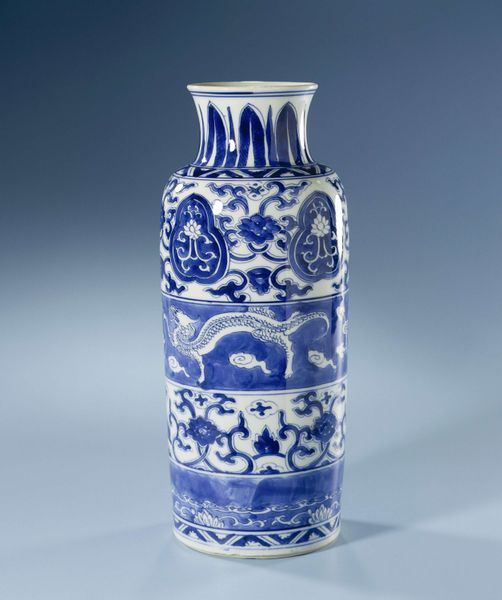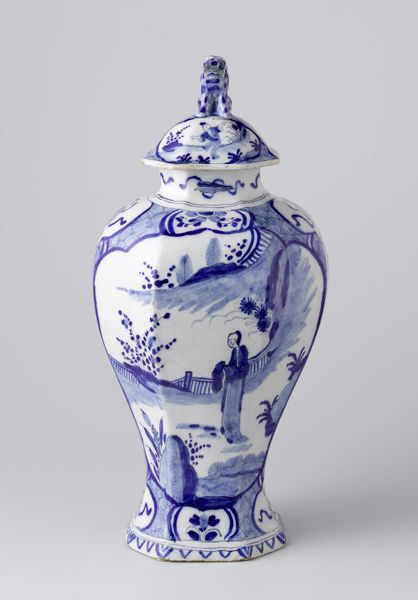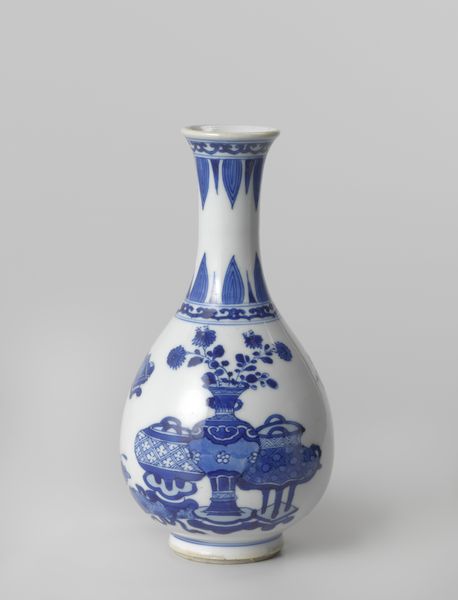
Dimensions: 16 1/4 x 6 3/4 x 6 in. (41.3 x 17.1 x 15.2 cm)
Copyright: Public Domain
Curator: The "Pear-shaped vase with cover," dating back to approximately 1764, made of earthenware, exemplifies decorative arts of the period. I find myself immediately drawn into its blue color scheme, it gives the vase a timeless and serene presence, what do you think? Editor: The materiality is really striking—it's earthenware, yet the design and execution feel refined. I'm thinking of the socio-economic conditions required to produce this, not just the raw materials, but also the specialist skills required to make these ornate decorations. How might such artisanal objects speak to labor divisions and trade relationships within 18th-century Dutch society? Curator: Absolutely, that craftsmanship needs to be contextualized! When considering the scenes, each vase portrays, often depictions of what look like courtesans leisurely enjoying landscape, within that decorative frame, it evokes societal hierarchies during Dutch golden age, a reminder that artistic endeavors reflect the social narratives and power structures of their time. Editor: Indeed, and this object prompts one to consider questions about who had access to the aesthetic ideals represented in such wares. Where did the raw materials originate? Who shaped these pieces? How might we excavate details from each mark to unearth the social underpinnings, the power dynamics at play behind those figures relaxing along what look like leisurely estates? Curator: Good point, considering labor, Dutch Golden Age's maritime dominance afforded access to raw materials via extensive trade networks involving indentured servitude labor on sugar or cotton plantations... that legacy shaped wealth distribution; such art highlights consumer culture. Also I see Delftware production involved specialized workshops, employing men and women each doing a section: shaping, firing or painting in assembly lines—what sort of individual labor went into these scenes. Editor: Exactly! So while admiring aesthetic artistry, let's consider Dutch mercantile success. The commodification that fueled trade systems allowed such craftsmanship and consumption to flourish in what might appear leisurely. The glaze even suggests something of overseas transport, what material realities can it tell us of our past, too? Curator: What an interesting note, looking at it this way provides an additional angle, prompting us towards broader discourses examining colonialism’s imprint upon European arts from then till even now, reminding how design aesthetic always mirrors wider societal currents while influencing values... Thank you. Editor: Thank you! By acknowledging this complicated interwoven web, our view provides us with greater understanding within historical landscapes as well too now even, beyond just visual appearances!
Comments
minneapolisinstituteofart about 2 years ago
⋮
The term "garniture" is used to describe a set of ceramic vessels for display on a cabinet, table, or on a chimneypiece mantel, the latter being specified as garniture de cheminée. Garnitures are traditionally made up of several beakers or vases, of alternating baluster and cylindrical shapes. This blue and white garniture is known as a "mirror set" and contains five pieces, the largest number featured in a traditional garniture. It contains three inverted pear-shaped and two cylindrical vases, each with a lid. All of them are decorated with Rococo relief cartouches, each featuring a landscape and a lone woodcutter. The garniture was manufactured by the Greek A factory, one of the most prominent factories in Delft during the 17th and 18th centuries. Its maker, Jacobus Halder Adriaesensz, owned the factory from 1765 until 1768. The introduction and evolution of garniture in the West over the centuries is closely tied to the development of ceramics as a central element of household decoration, sparked by the enthusiasm for Chinese imports in 17th-century Europe and America. While reflecting the look of porcelain, this set is made of more accessible tin-glazed earthenware, known in Holland as Delftware. It reflects a combination of Eastern and Western aesthetics: Chinese tradition is referenced through the classic porcelain forms, blue and white color scheme, and dog finials, while the Rococo decoration and woodcutter scene allude to European culture.
Join the conversation
Join millions of artists and users on Artera today and experience the ultimate creative platform.
